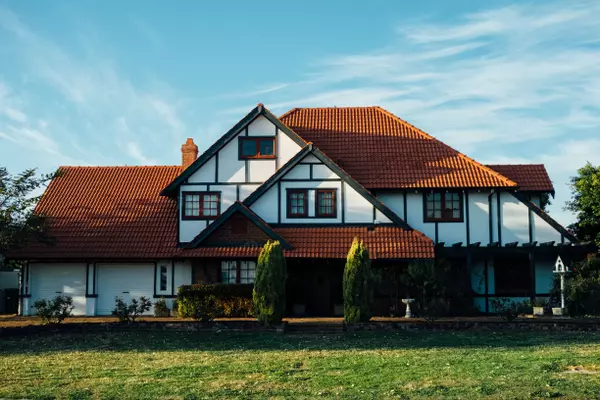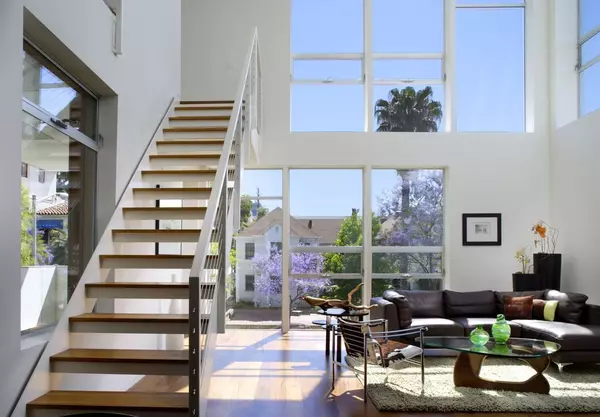Appreciation: Was Cleo Laine, dead at 97, a great jazz singer? Not according to her.
The death of Cleo Laine Thursday at the age of 97 has inspired a slew of admiring headlines for the acclaimed English vocal and theater star, nearly all of them hailing her as a great jazz singer. It’s a description Laine, who began performing jazz in 1952, took great exception with.
“I’d had absolutely no experience as a jazz singer then, and I don’t consider myself a jazz singer now,” she insisted in our 1984 San Diego Union interview, which appears in full below.
“I’m a singer of songs,” she continued. “I wasn’t singing like the current singers of the day. Although I was really a quite naive country girl, I sang as if I’d lived for a very long time. I was also a contralto, as opposed to a light singer, so I had a weightier voice and this appealed to them.”
Her protestations to the contrary, in 1986 Laine became the first British artist to win a Grammy Award in the Best Jazz Vocal Performance, Female, category. Her victory prompted an admiring Ella Fitzgerald to send Laine two-dozen roses and a note that read: “Congratulations, gal — it’s about time!”
Laine had previously earned Grammy nominations in the Best Classical Vocal Performance and Best Pop Vocal Performance, Female, categories. She was as adept singing Tin Pan Alley classics as she was essaying Gershwin’s “Porgy and Bess” and demanding vocal pieces by Charles Ives, Arnold Schoenberg and Robert Schumann.
The daughter of a Jamaican father and an English mother, Laine was born Clementina Dinah Campbell on Oct. 28, 1927. She took piano, dance and vocal lessons as a child, and soaked up everything she could.
“The biggest influence at that time in my life was American film musicals,” she said in her Union-Tribune interview. “I went to every one that came to England … every singer and dancer — from Fred Astaire to Louie Armstrong — I adored. I sat in the dark theater thinking, ‘Oh, if only someone would give me a chance, I’d be able to do that,’ stupidly not realizing that if I practiced more I might get the opportunity!”
That opportunity came in 1952 when she joined the band led by saxophonist John Dankworth. The couple married in 1958 and were together until his death in 2010.
“It was intimidating in a way,” Laine recalled of joining Dankworth’s group. “In fact, for about two years I didn’t have a real conversation with anyone in the band. I was clumsy and gawky — in America, I believe you’d say I was a klutz — but all John wanted was a singer. Luckily, via John, I ironed out the clumsiness.”
She also fared very well in the world of theater, earning acclaimed for her roles on London stages and Broadway alike. In 1986, Laine earned a Tony Award nomination for her portrayal of Princess Puffer in the Charles Dickens-based murder saga, “The Mystery of Edwin Drood.” She later played the Witch in a 1989 touring production of Stephen Sondheim’s “Into the Woods.”
Laine’s singing career saw her perform, usually with her husband, at Carnegie Hall, the Hollywood Bowl, San Diego’s Balboa Theater, London’s Royal Albert Hall and at other venues around the world.
She collaborated with such varied artists as Ray Charles, flutist James Galway, the London Symphony Orchestra, classical guitarist John Williams, the Duke Ellington Orchestra, and many more. In 1997, Laine became the first British jazz artist to be made a dame, the female equivalent of a knight. She performed until she was at least 90 and earned rave reviews for her May 2018 performance at London’s Royal Festival Hall.
Laine and her husband were avid arts supporters, as well as performers. In 1970, they opened an arts center called The Stables in Wavendon, England, near their home. It included a 300-seat theater where, in 2001, two of the founders of the rock band The Zombies — keyboardist Rod Argent and lead singer Colin Blunstone — reunited on stage for the first time in decades. that impromptu performance led to a full-scale Zombies’ reunion in 2004 that lasted until Argent suffered a stroke last year.
Rock Hall of Famer Colin Blunstone goes beyond The Zombies. ‘It all began in 1964,’ he says.
No cause of death has been disclosed as yet for Laine’s death. Here is her 1984 San Diego Union interview in full.
Versatile Cleo blends opera, pop and all that jazz
By GEORGE VARGA
San Diego Union, April 12, 1984 |
When Cleo Laine says she is not a jazz singer, you’d best believe her.
True, the British-born performer has earned lavish praise for her work in jazz, including Grammy award nominations last year and in 1973; but she has won similar plaudits for singing musicals, opera and pop, as well as challenging classical pieces like Arnold Schonberg’s “Pierrot Lunaire.” In each instance, she imbues her music with equal passion and conviction, making her one of those rare artists whose abilities are not exceeded by her ambitions.
Together with her husband and bandleader, saxophonist John Dankworth, with whom she will appear tomorrow and Saturday at the California Theater, Laine has compiled an extensive musical resume. She starred in an award-winning London production of the musical “Showboat” and substituted for the legendary Lotte Lenya in the prestigious Edinburg Festival production of Kurt Weil’s “The Seven Deadly Sins.” She also has recorded duets with an eclectic array of performers, including classical guitarist John Williams, singer Ray Charles, flutist James Galway and actor-pianist Dudley Moore (a member of her husband’s group in the 1950s).
“When I was very young, I dreamt of being everything that I am today and more,” said Laine in a recent telephone interview from Houston, where she was completing arrangements for her roles as singer and dancer in a ballet scored by her husband for the Houston Ballet.
“As you get older, of course, the realities seep in, but I never, ever lost sight of going on the stage, no matter what. Like most people, I did it willingly without being paid, and probably would still do it if I couldn’t get paid. It’s just one of those things you just do, because you need to do it. I had no other ambition in my life than to go on stage.”
Born Clementina Dinah Campbell in the London suburb of Southall, Middlesex, Laine was encouraged to pursue music from an early age on, both of her father, a Jamaican singer, and her mother.
“When we were very young, my brother and sister and I were given music lessons in piano, singing and dancing,” she recalled. “The biggest influence at that time in my life was American film musicals. I went to every one that came to England … every singer and dancer — from Fred Astaire to Louie Armstrong — I adored. I sat in the dark theater thinking, ‘Oh, if only someone would give me a chance, I’d be able to do that,’ stupidly not realizing that if I practiced more I might get the opportunity!”
After finishing her schooling, Laine worked in a variety of day jobs, although her passion for performing never wavered. An early, short-lived marriage produced one son, Stuart, a graphic designer who now lives near San Francisco (“He’s too old for me to tell you his age,” she laughs).
In 1952, the songstress joined the John Dankworth Seven — her first professional engagement.
“I’d had absolutely no experience as a jazz singer then, and I don’t consider myself a jazz singer now,” insisted Laine.
“I’m a singer of songs. I wasn’t singing like the current singers of the day. Although I was really a quite naive country girl, I sang as if I’d lived for a very long time. I was also a contralto, as opposed to a light singer, so I had a weightier voice and this appealed to them.
“It was intimidating in a way. In fact, for about two years I didn’t have a real conversation with anyone in the band. I was clumsy and gawky — in America, I believe you’d say I was a klutz — but all John wanted was a singer. Luckily, via John, I ironed out the clumsiness.”
Six years later, in 1958, Laine and Dankworth married. Soon thereafter, the ambitious singer left her husband’s band, contending that her position as a vocalist was secondary to that of the other musicians. A starring role in the play “Flesh to a Tiger” at London’s famed Royal Court Theater led to rave reviews, but not to additional work; and it was two years before Laine would again appear as an actress.
Undeterred, she began to perform as a cabaret singer, an endeavor — which, like acting — was entirely new to her. Again, she realized success.
“The big breakthrough came in 1964 when I recorded an album called ‘Shakespeare and All That Jazz,’” noted Laine. “It got a five-star review in Downbeat, which opened a lot of doors for me. In a funny sort of way, it enabled me to do more stage work instead of cabaret. I was asked to appear in the Brecht-Weil play ‘The Seven Deadly Sins’ at the Edinburg Festival, which I did. From that I got a hit record on the pop charts, and at the same time I was working at the Saddler’s Wells opera theater in London.
“So, really, from the ‘Shakespeare’ album, I started leap-frogging from one thing to another and enjoying a very happy, eclectic life.”
In an interview several years ago, rock star Pat Benatar, who had been initially trained as an opera singer, acknowledged the difficulty in making the transition from one style to another, specifically citing her need to learn not to enunciate. Did Laine encounter similar difficulties?
“Not really,” she replied. “I was never trained as a classical singer. I didn’t want to be. Although I went to a classical teacher, I told her I didn’t want to acquire a ‘produced’ voice. Therefore, I didn’t get that plummy sound, where everybody has to dot their i’s and cross their t’s, even though you can’t hear the words.
“So when Pat Benatar says she didn’t want to enunciate, that’s a load of rubbish as far as I’m concerned, because I don’t think classical singers enunciate properly anyhow. They’re much more concerned with the sound of their voice.”
Asked about the advantages of working with her husband, Laine spoke with tangible enthusiasm: “There are great advantages, really. When you’re on the road touring, it can be extremely lonely. I know a number of solo performers who have given up touring for that reason.
“Also, he’s my musical director, and they’re very expensive, and I don’t have to pay him!”
Laine and her husband founded the Wavendon All-music Project (or WAP), an ongoing musical education program based in Wavendon, England, that is as eclectic as its two directors.
“We started the WAP 14 years ago to break down the barriers between all kinds of music,” she explained. “We discovered that friends of ours like John Williams, Andre Previn, Ray Charles and many others all feel, much like we do, that there is really only one kind of music — good music. Young musicians coming out of music schools should be aware of all the other kinds of music, and should be able to play those other types of music, because 95 percent of them will not play in symphony orchestras or as soloists.
“We have a 300-seat theater near our home in Wavendon, and we put on all kinds of musical programs. We have music courses in classical and jazz and an all-music course. ‘Side by Side’ by Steven Sondheim first started at Wavendon.”
Categories
Recent Posts










GET MORE INFORMATION


